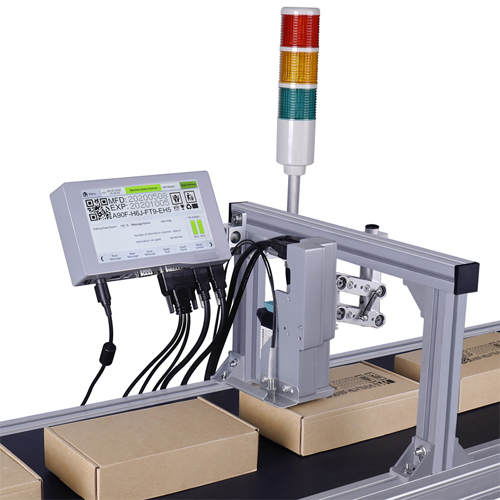Thermal jet printers are ideal for stringent requirements. Before we explain why, let's take a quick look at other technologies. Laser printing provides indelible code at high production speeds. It can also handle a variety of applications. Unfortunately, it doesn't work with all substrates, which means it doesn't provide the flexibility needed when handling food packaging.
Another option is continuous inkjet printing, the default option for many manufacturers. It certainly meets the minimum requirements. But as food brands demand more clarity and detail, the industry will soon start pushing the limits of what the technology can achieve. As for wax injection operations, they are not suitable for food package printing due to long start-up time and low print quality.
T220 High Speed Printer
So what makes thermal inkjet printing so good?
1. High speed
To keep the production line efficient, quality printers are needed at high speed. With TIJ, that's exactly what you get.
2. High quality
Printing clarity has become a major factor for food manufacturers. Thermal ink-jet (TIJ) printing provides extremely high resolution - up to 600 dpi.
3. The flexibility
Think about all the different types of food packaging you see in supermarkets. This diversity will grow further as manufacturers seek to differentiate their brands from each other. TIJ is suitable for a variety of substrates. The hundreds of nozzles inside each print head mean that TIJ can apply alphanumeric text (true fonts), graphics, logos, QR codes, 2d data matrix codes and more.
4. Full certification
Printing specialists pioneered water - and ethanol-based inks that are fully certified for use in food environments - drying quickly and suitable for a wide range of substrates and applications.
5. No stains and scratches
Traceability is critical in the food industry. Encoding and label integrity cannot be compromised. TIJ binds the above inks to the packaging substrate to achieve a permanent, scratch-resistant printing capable of withstanding the rigors of transportation and handling.
6. Easy integration
An interruption to the production line means an interruption to your output. TIJ systems are easy to use, easy to integrate with traditional technologies and quick to get started.
The key to the success of food packaging printing is to maintain high efficiency and safety.

评论
发表评论